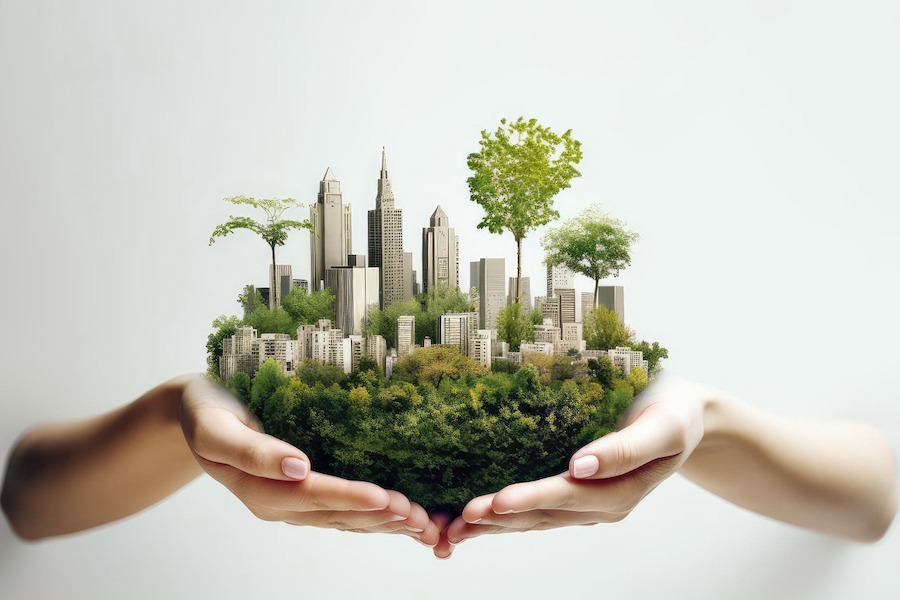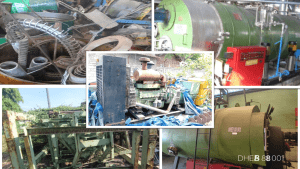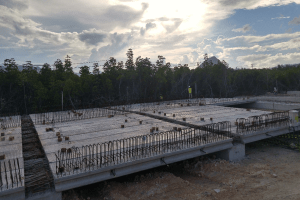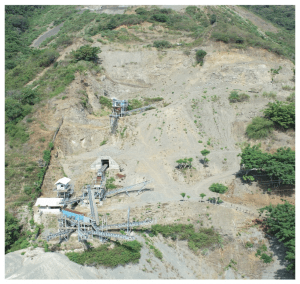In recent times, the public has been deeply concerned about the air pollution that blankets the Jabodetabek region. Over the past few weeks, a layer of grayish haze has shrouded the sky, which is, in fact, a thick layer of air pollution. In August 2023, the IQAir air quality monitoring site even ranked Jakarta as the city with the worst air quality in the world.
According to experts from the Institute for Environmental Research at IPB University and the Centre for Climate Risk and Opportunity Management in Southeast Asia Pacific (CCROM-SEAP), the significant contributors to air pollution include factors such as wind patterns, vehicle emissions, dry seasons, industrial activities, and more.
PT Wijaya Karya Beton Tbk (WIKA Beton), as an active player in the domestic concrete industry, also pays close attention to the concept of of green construction in pursuit of sustainable business practices. WIKA Beton has its own of green construction and green building programs, which are being gradually implemented. "Green construction, involves the design and execution of construction processes based on contractual documentation. The goal of implementing of green construction concept is to minimize the negative impact of construction processes on the environment. Meanwhile, green building emphasizes the environmental aspects of construction, design, and operation, with a primary focus on safety and natural surroundings.
The green construction program of green construction at WIKA Beton encompasses seven technical requirements: raw materials, energy, water, production processes, products, waste management, and greenhouse gas emissions. WIKA Beton prioritizes environmental management in building green building construction and emphasizes air quality and comfort in of green constructionFurthermore, efforts to reduce air pollution include testing emissions from diesel engines and exploring ways to manage CO2 emissions,2 including the use of alternative raw materials.
Additionally, WIKA Beton introduces Beton Porous as an alternative solution to address urban flooding issues. To actualize of green construction at project sites, WIKA Beton ensures that all projects are equipped with the necessary environmental permits, including Environmental Impact Assessment (AMDAL) and Efforts for Environmental Management and Monitoring (UKL-UPL) permits.
Several WIKA projects in eastern Indonesia, such as the Wani Port project, have adopted non-OPC cement, specifically Portland Composite Cement (PCC). Notably, to reduce carbon emissions, WIKA Beton utilizes fly ash waste as a component in ready-mix concrete, ready mix These initiatives have already been applied in prestigious projects like the Jakarta International Stadium, the office of the High-Speed Railway Contractor Consortium (HSRCC), the Integrated Industrial Zone in Batang, and various other projects.
Exploring Green Construction Practices at WIKA Beton
Recently, the public has been alarmed by the severe air pollution enveloping the skies over Jakarta and its surrounding areas (Jabodetabek). For weeks, a greyish haze—actually a thick layer of air pollution—has blanketed the region. In August 2023, the air quality monitoring platform IQAir ranked Jakarta as the city with the worst air quality in the world.
Experts from the Center for Environmental Research at IPB University and the Centre for Climate Risk and Opportunity Management in Southeast Asia Pacific (CCROM-SEAP) attribute the severe pollution to several factors, including wind patterns, vehicle emissions, the dry season, industrial activities, and more.
WIKA Beton’s Green Initiatives
PT Wijaya Karya Beton Tbk (WIKA Beton), a key player in Indonesia’s concrete industry, is actively addressing environmental challenges by implementing green construction practices to promote sustainable business operations. WIKA Beton’s green construction and green building programs are being introduced progressively to mitigate environmental impacts.
Green construction refers to the planning and execution of construction processes based on contractual documentation aimed at minimizing the negative environmental impact of construction activities. Meanwhile, green building focuses on environmentally friendly aspects of construction, design, and operations, with primary goals including environmental safety and preserving natural surroundings.
Seven Key Aspects of Green Construction
WIKA Beton’s green construction program is centered on seven technical aspects: raw materials, energy, water, production processes, products, waste management, and greenhouse gas (GHG) emissions. The company emphasizes environmental management in its green building initiatives, as well as air quality and comfort in its green construction processes.
Efforts to reduce air pollution also include exhaust gas emissions testing for diesel engines and CO2 emission management by utilizing alternative raw materials. Additionally, WIKA Beton offers Porous Concrete as an innovative solution to urban flooding.
Sustainability Measures at Project Sites
To implement green construction at its project sites, WIKA Beton ensures compliance with environmental permits, including Environmental Impact Analysis (AMDAL) and Environmental Management and Monitoring Efforts (UKL-UPL). These measures reflect the company’s commitment to sustainable practices.
Projects in eastern Indonesia, such as the Wani Port project, have adopted non-Ordinary Portland Cement (non-OPC), specifically Portland Composite Cement (PCC). To further reduce carbon emissions, WIKA Beton incorporates fly ash, an industrial byproduct, as a mixture in its ready-mix concrete. This practice supports sustainable industry and has been applied in prestigious projects such as the Jakarta International Stadium, the High-Speed Railway Contractor Consortium (HSRCC) office, the Batang Integrated Industrial Estate, and others.
A Path Toward Sustainable Development
WIKA Beton’s initiatives demonstrate its commitment to integrating sustainable practices into its operations. By prioritizing environmental stewardship and reducing its carbon footprint, the company is setting a benchmark for green construction in Indonesia while addressing pressing environmental challenges.





